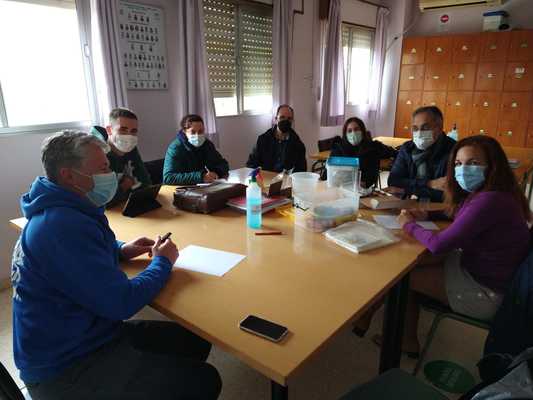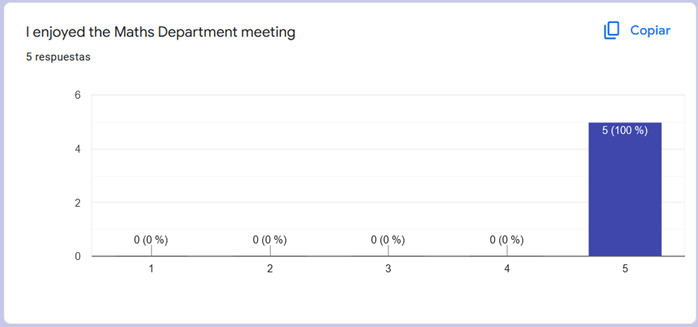The Maths department meeting was fruitful and interesting. It helped every assisting teacher to be aware of our own reality and of some other possible methods to work and use in our classrooms.
However, it is evident that it was not as dynamic and useful as the meeting held in the first mobility due to the serious communication problems in English of some of the members of the Maths department of the host school.
The meeting was attended by 8 teachers: 2 Belgians, 1 Irish and 5 Spanish.
Firstly, the contents that are seen on geometry in each of the schools were discussed:
In Ireland, they work on angles in the first year, but most of the geometry content is covered in the third year. In the last courses, geometry is worked on in advanced mathematics classes.
In Belgium, in the first year the properties of figures are studied and, in the second year, special lines such as the bisector. They start working on trigonometry in the third year and expand it during the fourth year.
However, in Spain, despite the fact that we try to make geometry transversal to all the contents that are worked on in other branches of mathematics, trigonometry is not treated until fourth grade and special lines are not worked on in such depth, while analytic geometry is studied in advanced Maths courses.
At a more specific level, we comment the fact that in Ireland students have in the exams the formulas with which they calculate areas and volumes, so what is required of them is that they know how to apply them, while in other schools they must memorize them for the written tests.
Belgian students do have the formula in the examen in the case of students with dyscalculia.
A week of Maths is also held there, a concept that is very attractive and motivating to the rest of the teaching staff of the Belgian and Spanish schools.
The Belgian school tells us about the Mathematical Olympiads in which 10% of the third-year students usually participate voluntarily, with more or less 5 students reaching the final each year.
The Spanish school comments that its Olympics are held in the second year and that it has been years since we have had any volunteer students who want to participate.
Spanish teachers show some of the teaching materials that the school has and with which they work geometry in class:
- hollow geometric bodies to calculate their volume and then fill with water to check that the calculations were valid
- construction games to recreate regular polyhedrons
- tables and meters of angles to calculate, with the help of Thales's theorem or trigonometry, inaccessible measurements.
There is also talk of the usual practical activity of asking students to bring milk cartons or soda cans to class to calculate areas or volumes. Also practical exercises such as the verification that two walls are perpendicular using the Pythagorean theorem.
We all agree on the difficulty of students in general in their spatial vision and, in this sense, we believe that the best way to improve their knowledge of geometry and their understanding regarding its applications is to work with real and tangible objects, to bring Maths closer to real life.

